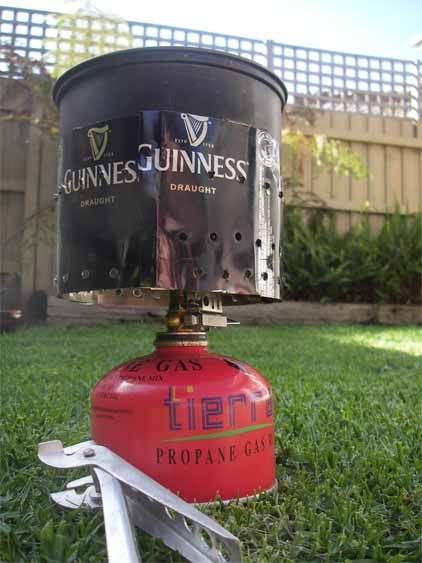Some comments from this article at BPL :
http://www.backpackinglight.com/cgi-bin ... eport.html(you need a subscription to read it...)
"
Fuel ConsumptionThe most fuel-efficient stoves under optimal conditions were the Jetboil, Snow Peak GigaPower, Primus Micron, Brunton Crux, and Coleman Ultralight. The least efficient were the Coleman PowerBoost, Primus TechnoTrail, and MSR SuperFly.
Using a moderate flame reduced fuel consumption an average of 27%.
When using a moderate flame under calm conditions, the fuel efficiency to boil 1 quart of water for four of the mini-canister stoves - Brunton Crux, Coleman Ultralight, Primus Micron, and Snow Peak GigaPower - was as good as the efficiency of the Jetboil.
Boiling 1 quart of water used about 10% less fuel compared to boiling 1 pint of water at a time.
Fuel consumption doubled in windy conditions with no windscreen. The only fuel-efficient stove in direct wind was the Jetboil.
Adding a windscreen under windy conditions restored stove fuel efficiency to "only" 21% worse (on average) than efficiency under optimal conditions. The most fuel-efficient stoves in windy conditions were the Jetboil, Primus Micron, and Coleman Ultralight. The least efficient were the Coleman PowerBoost, Primus TechnoTrail, and MSR SuperFly.
Fuel consumption at full throttle decreased in cold conditions because the stoves burned slower (equivalent to a moderate flame).
Windy conditions had a disastrous effect on the fuel efficiency of all the stoves, except the Jetboil (Figure 2). Running the stoves unprotected in a 12 mph wind doubled fuel consumption (excluding the Jetboil) compared to calm conditions. The Jetboil's fuel consumption increased only 15% under windy conditions. Protecting stoves from the wind with a windscreen resulted in increased fuel consumption, on average, of 21% compared to calm conditions. The Jetboil used only 2% more fuel in windy conditions when protected by a windscreen as compared to calm conditions. The fuel efficiency of the Snow Peak GigaPower and Brunton Crux was impaired with a windscreen in direct wind, apparently due to turbulence behind the windscreen. Note: the Crux reviewer observed that its fuel efficiency in the wind improved in the field when a windscreen of a different design was used.
From the test data we calculated the "gas mileage" from a 4-ounce canister of fuel (Figure 3) to show the increased efficiency from wind protection. In direct wind, several of the stoves would boil less than 3 quarts of water from a 4-ounce canister of fuel! Bottom line, canister stoves are very sensitive to wind; the better the wind protection, the better the heating efficiency."
The article estimated a real world usage (some wind, some cold days but
using windscreen/moderate flame/wide pot) to be between 6.5 L and 10.5 L of boiled water per 100g canister
5 out of 9 boiled over 8 , 3 at about 7 and one at 6.5.
So my 10g per liter is close (
but optimistic) to that considering that probably half of the water does not need to reach 100c . Of course again you MUST consider how I do it...





